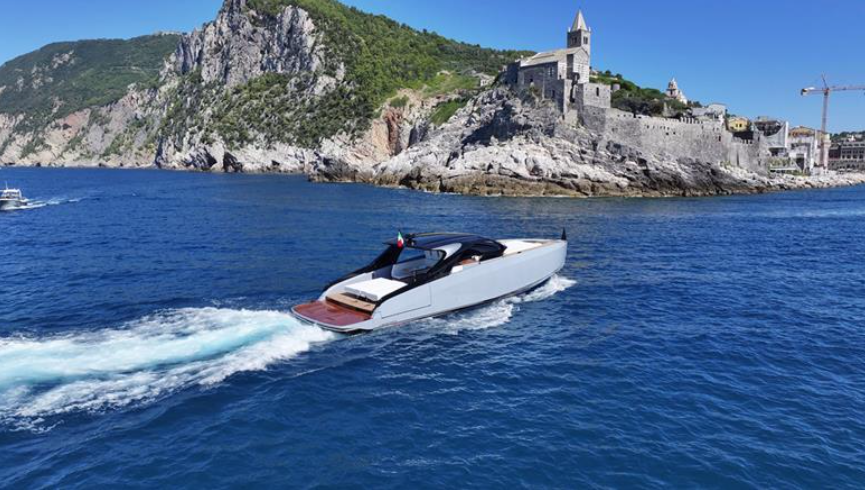Vespro, the first model by Italian yard Centounonavi, had its world debut at the Cannes Yachting Festival . The smallest model in a planned range that also includes the Forza (28 m) and Eterea (39 m), the 16.7m Vespro is billed as an innovative fast cruiser – powered by two 1,200 hp MAN 8V engines coupled to MJP 350X water jets, it is capable of a top speed of 57kts with a clamed fuel consumption of just 6 lt/nm when sailing at a speed of 30kts. A range of 350 nautical miles at top speed has also been confirmed.

Down below the Vespro features an owner’s cabin with private bathroom and separate shower box in the bow, a large living room with galley and a second service bathroom, finally a second guest cabin aft of the stairs leading to below the deck. Black and white lacquers were used extensively in the furnishings, combined with large aluminium surfaces and mirrors with white leather seats.
The windshield can be retracted into the roof of the deckhouse for total open air navigation is a feature shared by all Centounonavi models. Below the hardtop is an L-shaped sofa with a dining table, another sofa opposite, bar unit and, of course, the helm station. The aft cockpit features a walkaround sundeck that can be transformed into a dining area. Foldable bulwarks increase the surface of the dining area and of the swim platform, while the foredeck, easily accessible from the comfortable side decks on both sides, consists almost entirely of a large sundeck.
The builder also claims the Vespro has strong eco credentials – the yard’s strapline is ‘Fast is Green’. “This is not an empty statement but a real design choice, supported by a number of environmentally friendly solutions,” says the boat’s designer, Manuela Lucchesi. “The PVC foams we use are recycled, as are other materials we use for construction. By reducing weight as much as possible and building particularly efficient hull profiles, consumption is considerably lower; water-jet propulsion is less dangerous compared to propellers, which are a risk for marine animals. Even the design is not a stylistic exercise as an end in itself, but is always aimed at being efficient and practical to use: for example, the dynamic air intakes are integrated into the rollbar, while the vertical windlass system, a solution developed by Centounonavi (patent pending) saves space and the owner’s cabin gains an extra linear meter.


.png)


